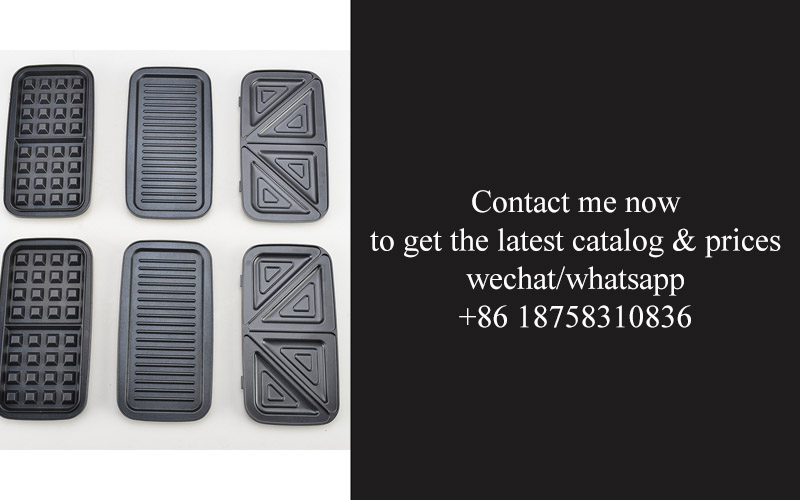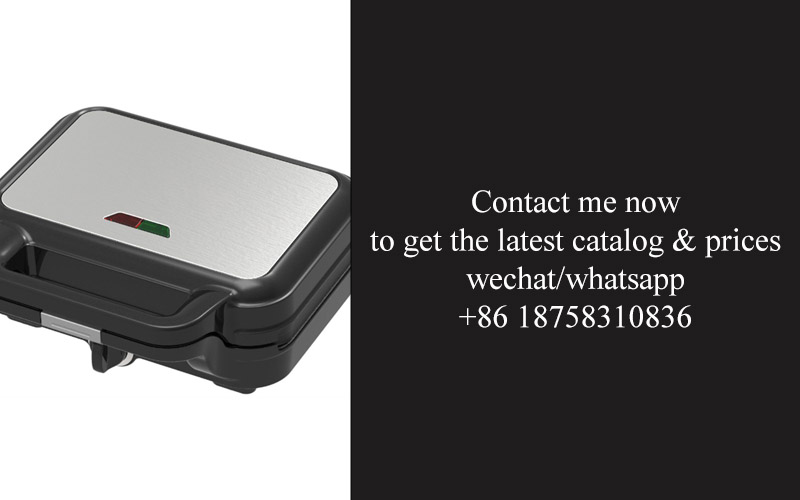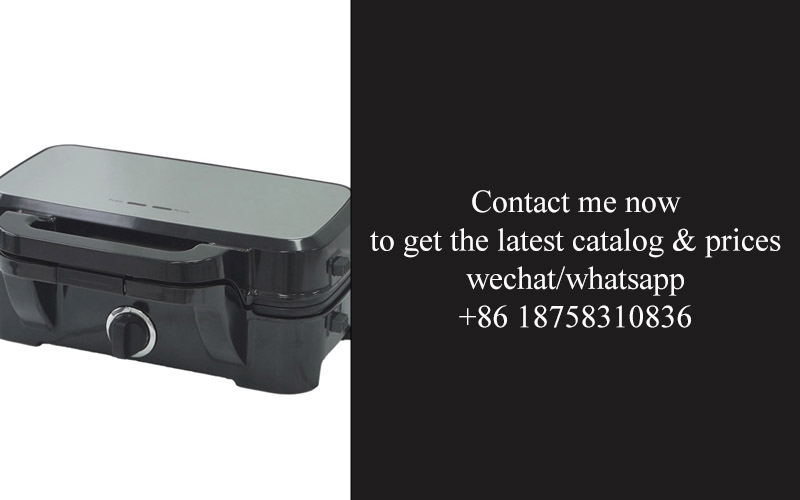Address
304 North Cardinal
St. Dorchester Center, MA 02124
Work Hours
Monday to Friday: 7AM - 7PM
Weekend: 10AM - 5PM
Address
304 North Cardinal
St. Dorchester Center, MA 02124
Work Hours
Monday to Friday: 7AM - 7PM
Weekend: 10AM - 5PM

Imagine a world where the perfect sandwich is just a touch away, with flavors and textures that are meticulously crafted with every press of a button. That world isn’t just a dream; it’s a reality made possible by the innovation of sandwich makers. These kitchen gadgets have evolved to become more than just appliances; they’re culinary companions that can elevate the humble sandwich into an art form. Let’s dive into the heart of what makes these sandwich makers so indispensable and how they can transform your dining experiences.
The sandwich, a staple of lunchboxes and picnics around the world, has a rich history that’s as diverse as the flavors it encompasses. The evolution of sandwich making is a journey through time, showcasing how a simple combination of ingredients has transformed into a culinary art form.
Bread, the foundation of the sandwich, has been a staple in human diets for centuries. In ancient Egypt, bread was a symbol of sustenance and was used in rituals and feasts. However, the concept of a “sandwich” as we know it today did not emerge until much later.
The 17th century marked the birth of the sandwich, credited to the 4th Earl of Sandwich, John Montagu, in England. As a busy man, Montagu is said to have requested his servant to place slices of beef between two pieces of bread, allowing him to eat while playing cards without getting his hands dirty. This makeshift meal quickly became popular among the English aristocracy and spread throughout Europe.
As the 18th century unfolded, the sandwich began to evolve. Chefs and home cooks alike started experimenting with fillings, incorporating various meats, cheeses, and vegetables. Delicatessens emerged, offering an array of cured meats and cheeses, making it easier for the average person to craft their own sandwiches.
The 19th century saw the introduction of new bread-making techniques, such as the development of sliced bread by Joseph Fry in 1843. This innovation allowed for more consistent sandwich-making, as each slice was the same size and thickness, making it easier to stack fillings with precision.
The 20th century was a golden age for sandwich innovation. New types of bread were introduced, such as pita bread, baguettes, and tortillas, expanding the possibilities for sandwich construction. Fast-food chains like McDonald’s and Subway took the sandwich to new heights, offering standardized, fast, and convenient meal options that became a part of everyday life.
Technological advancements also played a significant role in the evolution of sandwich making. The invention of the electric sandwich press in the 1950s allowed for easier and more even cooking, ensuring that the outer layers of the bread were crispy while the fillings stayed warm and tender.
As the 21st century dawned, the sandwich took on a new life online. Food blogs and social media platforms gave rise to a wave of sandwich enthusiasts, sharing recipes and sandwich-making tips with a global audience. From gourmet sliders to creative fusion sandwiches, the possibilities seemed endless.
Today, the art of sandwich making is not just about convenience or quick meals. It’s about culinary expression, using fresh ingredients and innovative techniques to create unique and flavorful experiences. From artisanal shops offering hand-crafted sandwiches to food trucks serving up creative combinations, the evolution of sandwich making continues to surprise and delight food lovers everywhere.
The journey from Montagu’s card-playing meal to the countless variations of today’s sandwich world reflects the ever-changing tastes and preferences of society. Whether enjoyed at a casual café or a fine dining establishment, the sandwich remains a beloved comfort food that is forever evolving, ready to be reinvented in the hands of the next culinary innovator.

The humble sandwich has long been a staple in our diets, from the classic ham and cheese to the exotic flavors of fusion cuisine. Yet, the art of sandwich making has come a long way. Today, the best sandwich machines have revolutionized how we prepare these versatile meals. Here are just a few reasons why investing in the best sandwich machine could be a game-changer for your kitchen.
Consistency and Quality: Crafting the perfect sandwich can be tricky, especially when trying to ensure even cooking and a crispy texture. The best sandwich machines are designed to deliver consistent results with every press, guaranteeing that your bread is perfectly toasted, the fillings heated to perfection, and the layers sealed together seamlessly.
Time Efficiency: Who has time to wait for the oven to preheat or the skillet to heat up on the stove? With a sandwich maker, you can have your breakfast, lunch, or dinner ready in a fraction of the time. The quick cooking process means less waiting and more enjoying your meal.
Versatility in Cooking Styles: Different sandwich machines offer a variety of cooking functions, from classic grilling to sandwich pressing. Some models come with adjustable heat settings and non-stick surfaces that prevent sticking, making it easy to experiment with various fillings and toppings without the risk of burning.
Space and Cleanliness: Traditional cooking methods can be messy and may require multiple appliances. A sandwich maker often replaces the need for a grill, pan, or oven, freeing up valuable counter space and reducing the number of dishes to clean afterward. The compact size and removable parts make for easy storage and maintenance.
Enhanced Flavors: By sealing your sandwich while cooking, a sandwich maker can enhance the flavors of the ingredients. The press creates a barrier that locks in the moisture and aromas, leading to a tastier and juicier sandwich experience.
Ideal for Parties and Large Groups: Whether you’re hosting a brunch, a picnic, or a casual gathering, a sandwich machine can be a lifesaver. It can cook multiple sandwiches at once, which is perfect for when you need to serve a crowd without the hassle of flipping or rotating each one on a hot surface.
Health Benefits: With a sandwich maker, you have more control over the ingredients going into your sandwich. This means you can opt for healthier options, such as whole-grain bread, lean proteins, and fresh vegetables, without compromising on taste or convenience.
Cost-Effective: Over time, the cost of buying pre-made sandwiches can add up. By investing in a high-quality sandwich maker, you can enjoy fresh, homemade sandwiches for a fraction of the price, which is both budget-friendly and environmentally conscious.
Ease of Use: The best sandwich machines are user-friendly, with intuitive controls and simple maintenance. Many come with recipes and guides, making it easy for even the most novice cooks to create delicious sandwiches in no time.
Customization: With a sandwich maker, you’re not limited to traditional sandwiches. You can try your hand at making wraps, flatbreads, and even mini sandwiches. This opens up a world of culinary possibilities, allowing you to tailor your sandwiches to your personal preferences.
From busy professionals looking for a quick and nutritious meal to families that enjoy making breakfast together, a high-quality sandwich maker is a versatile and valuable kitchen appliance. It offers the convenience of fast food with the homemade taste and quality you deserve. Whether you’re in need of a breakfast fix, a quick lunch, or an impromptu dinner, the best sandwich machine ensures that deliciousness is just a press away.

In the quest for the perfect sandwich, investing in a high-quality sandwich maker is a game-changer. But with so many options on the market, knowing what to look for is crucial. Here are some key features to consider when selecting a sandwich maker:
Even Heat Distribution: One of the most critical features is even heat distribution. A great sandwich maker ensures that each layer of your sandwich is cooked to perfection, with no cold spots or overly toasted bread. Look for models with a non-stick cooking surface and a consistent heating element that guarantees a uniform result.
Multiple Setting Options: Not all sandwiches are made equal, and a versatile sandwich maker should cater to various preferences. Opt for a machine that offers different temperature settings and perhaps even adjustable press strength. This allows you to toast the bread to your liking, whether you prefer a light crunch or a crispy exterior.
Size and Capacity: Think about how many sandwiches you’ll be making at once. If you’re feeding a family or hosting a small gathering, you’ll want a sandwich maker with a generous capacity. Some models offer extra-large slots to accommodate larger slices of bread or hearty fillings, ensuring that you can cook multiple sandwiches in one go.
Safety Features: Safety should always be a top priority. A good sandwich maker includes features like a locking lid to prevent accidental opening, a non-slip base to keep it stable on your countertop, and a cool-to-the-touch exterior after cooking. These features help prevent burns and ensure a safe cooking experience.
Ease of Use: A sandwich maker should be straightforward to operate. Look for models with simple controls and intuitive interfaces. A clear display that indicates the cooking progress, along with easy-to-understand buttons or a dial, will make the process much more pleasant.
Additional Functions: Some sandwich makers come with extra features that can elevate your sandwich game. For example, a model with a panini press option can give your sandwiches a pressed, grilled texture. Others may have features like a removable non-stick plate for easy cleaning or even a built-in scraper to remove excess filling.
Cleaning and Maintenance: A sandwich maker that’s easy to clean is a lifesaver. Non-stick surfaces are ideal as they reduce the amount of food residue that sticks to the plates, but also consider whether the plates are dishwasher safe. Additionally, the ease of cleaning the lid, base, and any additional attachments is something to keep in mind.
Durability: Investing in a durable sandwich maker means you’re likely to get years of use out of it. Check for sturdy construction, with heavy-duty materials that won’t bend or warp with repeated use. A sandwich maker that feels solid and well-built will withstand the test of time and daily use.
Portability: If you’re looking for a sandwich maker that’s easy to move from kitchen to kitchen or to take on trips, consider one with a compact design and a travel-friendly size. Some models come with a carrying case or are lightweight enough to fit into a backpack.
Brand Reputation: Finally, the brand behind the sandwich maker can tell you a lot about its quality. Research well-known brands that have a reputation for reliable appliances. Reading reviews from other users can also give you insight into the longevity and reliability of the product.
By focusing on these key features, you can choose a sandwich maker that not only meets your immediate needs but also stands the test of time, ensuring that you’re always able to craft the perfect sandwich, every time.

The Hamilton Beach 25401 Sandwich Maker is a game-changer for those who love their breakfasts and snacks with a personal touch. Its non-stick surfaces ensure that your sandwiches come out perfectly golden-brown, while the adjustable heat settings let you tailor the crispiness to your preference.
The Breville BSM800XL The Sandwich Maker is a sleek and stylish addition to any kitchen. With its extra-large plates, it’s perfect for making those monstrous sandwiches that can feed a crowd or satisfy a hearty appetite. The locking mechanism ensures that your fillings stay secure during the cooking process.
The Cuisinart CMK-1000 Sandwich Maker is a versatile appliance that doesn’t just make sandwiches; it’s also great for grilled cheese, paninis, and even omelets. The adjustable temperature control allows you to achieve the perfect level of toastiness, and the removable plates make cleaning a breeze.
The George Foreman GRP1060 Sandwich Maker is a classic in the world of sandwich presses, known for its iconic design and even cooking. The unique ridged plates add a delicious char-grilled texture to your sandwiches, and the hinged design makes it easy to load and unload your creations.
The Oster CKSTBRC-CA Sandwich Maker is compact yet powerful, making it ideal for small kitchens or those who prefer a more portable appliance. The dual-sided plates are great for making two sandwiches at once, and the adjustable heat control ensures that your food is cooked to perfection every time.
The Black & Decker G4845 Sandwich Maker is a budget-friendly option that doesn’t compromise on quality. It features a non-stick surface that prevents sticking and makes cleanup a cinch. The easy-to-use controls and the ability to make a variety of sandwiches, from simple ham and cheese to gourmet creations, make this machine a must-have for sandwich enthusiasts.
The Cuisinart SM-50 Electric Sandwich Maker is designed with convenience in mind. The flip-top design allows for easy access to your freshly cooked sandwiches, and the wide opening can accommodate larger fillings. The adjustable temperature control ensures that you can achieve the perfect level of doneness.
The Oster CKSTBRC-CA Sandwich Maker is a compact and convenient appliance that’s perfect for those who need a quick and easy way to prepare a sandwich. The dual-sided plates are great for making two sandwiches simultaneously, and the removable plates make it easy to clean.
The Hamilton Beach 25401 Sandwich Maker is a versatile appliance that can handle a variety of sandwich styles. Whether you’re in the mood for a classic grilled cheese or a gourmet panini, this machine can deliver. The non-stick surfaces and adjustable heat settings make it a reliable choice for any sandwich lover.
The Breville BSM800XL The Sandwich Maker is not just a sandwich press; it’s a statement piece for your kitchen. Its extra-large plates and sleek design make it perfect for entertaining, and the locking mechanism ensures that your sandwiches stay intact during cooking. This machine is a testament to the fact that a great sandwich maker can be both functional and stylish.

Navigating the world of sandwich machines can feel a bit like a sandwich itself—simple on the surface, but with layers of complexities beneath. Whether you’re a seasoned chef or a kitchen novice, using a sandwich maker like a pro is all about understanding its ins and outs. Here are some top tips to help you master your new appliance and create the perfect sandwiches every time.
Start by familiarizing yourself with the machine’s layout and controls. The surface where you’ll place your sandwiches is often non-stick, which means it’s crucial to keep it clean to prevent sticking. Take a moment to note the heating elements and the lid’s closing mechanism. These elements are what will seal and cook your sandwich to perfection.
Preparation is key to making a great sandwich in a machine. Ensure your bread is sliced evenly and at the right thickness for the sandwich maker you have. Too thick, and your bread may not cook properly; too thin, and you might end up with a sandwich that falls apart. Soft breads like brioche or ciabatta tend to work well, but feel free to experiment with different types of bread to see what suits your taste.
Layer your fillings with intention. The order in which you place ingredients in your sandwich can impact the final texture and taste. For instance, placing wet or gooey ingredients like lettuce or cheese at the bottom can prevent other toppings from sticking or becoming soggy. Keep in mind the balance of flavors and textures, and don’t overdo it—your sandwich should still be able to hold together when cooked.
Before you start cooking, it’s essential to heat the sandwich maker. Most machines will have an indicator light or a “ready” signal. Waiting for this ensures that your machine is at the optimal temperature for cooking. It’s a small step that can make a big difference in the overall quality of your sandwich.
Once your machine is heated and you’ve prepared your sandwich, place it on the surface. Close the lid securely, but not so tight that it compresses your sandwich too much. The lid’s tightness is often adjustable, so find the sweet spot that suits your preferred sandwich consistency.
Time is also a factor. Most sandwich makers will have a recommended cooking time, which is typically around 3 to 5 minutes, depending on the thickness of your sandwich and the settings on your machine. Use the timer as a guide, but be ready to open the lid halfway through to check on the sandwich. The bread should be golden brown and crispy on the outside, with the fillings cooked through.
Keep an eye on the steam. If you notice too much steam escaping, it might indicate that your sandwich is becoming too soggy or overcooking. Opening the lid can also help to release steam and prevent the bread from burning.
After cooking, remove the sandwich carefully with a spatula or tongs, as it will be hot. Let it cool for a moment if needed before taking a bite. If your sandwich maker has adjustable heat settings, don’t hesitate to experiment with different levels to see how it affects the cooking process.
Remember, practice makes perfect. The more sandwiches you make in your machine, the better you’ll understand how to manipulate the temperature, timing, and ingredient placement to achieve your desired outcome. Don’t be afraid to experiment with different toppings, spreads, and cooking times to find what works best for you.
Here are a few pro tips to keep in mind:
By following these steps and tips, you’ll be well on your way to using your sandwich maker like a pro, crafting sandwiches that are as impressive as they are delicious. Enjoy the process and let your creativity run wild with the possibilities!

Cleaning the Sandwich Maker
Regularly cleaning your sandwich maker is crucial for maintaining its performance and longevity. After each use, ensure the heating elements and surfaces are cool to the touch. Use a damp cloth to wipe away any crumbs or spills. For more stubborn residue, a non-abrasive sponge can help. Avoid using harsh chemicals or abrasive cleaners, as they can damage the non-stick surfaces or electronic components.
Checking for Damage
Periodically inspect your sandwich maker for any signs of damage. Look for cracks in the heating plates, frayed electrical cords, or any parts that seem loose or worn. If you notice any issues, it’s best to address them promptly. A cracked plate can lead to uneven heating, while a frayed cord poses a safety hazard.
Regularly Oil the Non-Stick Surfaces
If your sandwich maker has non-stick surfaces, it’s important to keep them well-oiled to prevent sticking and extend the life of the coating. Apply a thin layer of cooking oil to the plates before your first use and then periodically after that. Be sure to wipe off any excess oil, as too much can make your sandwiches greasy.
Avoid Overfilling
Overfilling your sandwich maker can lead to uneven cooking and can also cause food to spill out during the heating process. Always follow the manufacturer’s recommended filling guidelines to ensure your sandwiches cook evenly and prevent messes.
Removing Food Residue
Once the sandwich is done, it’s essential to remove any food residue from the heating plates. Use a spatula to gently lift the sandwich off the plates. Be careful not to scrape or scratch the surfaces, as this can damage the non-stick coating or the plates themselves.
Unplug After Use
After each use, unplug the sandwich maker to prevent any accidental burns or electrical hazards. This is especially important if you have children or pets in the home. It’s also a good practice to keep the appliance unplugged when not in use to save energy.
Storing the Sandwich Maker
When not in use, store your sandwich maker in a cool, dry place. If you’re storing it for an extended period, consider covering it with a cloth or placing it in a protective case to keep it dust-free and well-protected.
Using a Cleaning Brush
Many sandwich makers come with a cleaning brush, which is specifically designed to clean the crevices and hard-to-reach areas of the heating plates. Use this brush regularly to remove any food particles or grease that may accumulate over time.
Avoid Using Metal Utensils
Never use metal utensils or tools on your sandwich maker. The sharp edges can scratch the non-stick surfaces or damage the heating elements. Always use plastic or wooden utensils when removing sandwiches from the machine.
Checking the Seals
The seals around the sandwich maker are important for maintaining a tight seal and ensuring even cooking. Inspect them regularly for any signs of wear or damage. If you notice any cracks or splits, replace the seals immediately to prevent steam leaks and ensure proper operation.
Using the Right Size of Bread
Using the correct size of bread is essential for achieving the perfect sandwich. If the bread is too large, it may not fit properly in the sandwich maker, leading to uneven cooking. Conversely, if the bread is too small, it may not seal properly, causing the filling to spill out. Always use bread that fits snugly within the designated area of the sandwich maker.
Cleaning the Outside
Don’t forget to clean the outside of your sandwich maker as well. Wipe down the exterior with a damp cloth and mild detergent to remove any fingerprints, smudges, or spills. Keeping the outside clean not only improves the appearance of your appliance but also makes it easier to maintain.
Replacing the Heating Elements
Over time, the heating elements in your sandwich maker may become less efficient or stop working altogether. If you notice that your sandwich maker is taking longer to cook or not heating up at all, it may be time to replace the heating elements. Consult the user manual for instructions on how to safely remove and replace them.


In the quest for the perfect sandwich, the journey is as delightful as the destination. The sandwich, a simple yet versatile meal, has come a long way from its humble origins. It’s a canvas for creativity, a vessel for flavors, and a staple in many a lunchbox. But to truly master the art of the sandwich, one must not only know how to craft it but also how to savor it. Let’s reflect on the journey and the anticipation of the perfect sandwich that awaits us at the end of each meal.
The sandwich has been a staple in the American diet since the 18th century, but its roots stretch back even further. The earliest sandwiches were simple, consisting of slices of bread with meat or cheese pressed between them. It wasn’t until the 19th century that the sandwich as we know it today began to take shape. The story of the sandwich is often credited to John Montagu, the 4th Earl of Sandwich, who requested his servant to bring him a meal that he could eat without getting his hands dirty while playing cards. Thus, the sandwich was born, named after its inventor.
Over the years, the sandwich has evolved into a culinary phenomenon, with countless variations and styles. From the classic ham and cheese to the exotic avocado and mango, the sandwich has become a reflection of cultural tastes and regional preferences. It’s a meal that can be as simple as a quick bite or as elaborate as a gourmet creation, and the possibilities are virtually limitless.
As we ponder the anticipation of the perfect sandwich, it’s important to remember that the journey is as satisfying as the destination. The anticipation of that first, satisfying bite is a taste of joy that precedes the meal itself. It’s a moment of excitement, a promise of flavor, and a reminder of the simple pleasures in life.
In the end, the perfect sandwich is not just about the ingredients or the technique; it’s about the experience. It’s the combination of textures, flavors, and aromas that create a symphony of taste. It’s the comfort of a familiar favorite or the thrill of an unexpected twist. Whether it’s a childhood favorite or a culinary adventure, the perfect sandwich is a personal experience that resonates with each individual.
The anticipation of the perfect sandwich also serves as a reminder of the importance of simplicity in food. In a world where culinary trends come and go, the sandwich remains a timeless classic. It’s a testament to the fact that sometimes the best things in life are the simplest.
As we reflect on the journey of the sandwich, we might also consider the role it plays in our lives. It’s a meal that can be shared with friends, a comfort during times of stress, and a celebration of life’s small joys. The anticipation of the perfect sandwich is a reflection of our human nature, our desire for satisfaction, and our appreciation for the simple things in life.
In conclusion, the perfect sandwich awaits us, not just as a meal, but as a symbol of our culinary heritage and our collective love for food. It’s a reminder that in the world of sandwiches, there’s always room for creativity, for new flavors, and for the joy of anticipation. So, the next time you think about a sandwich, remember that it’s more than just food; it’s a story, a journey, and a promise of satisfaction.